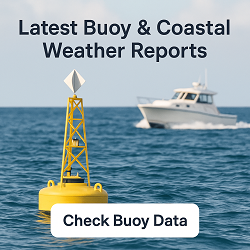Dripping Springs, TX Weather Forecast and Current Conditions (78620)
Current Conditions From Nearby Local Station

Feels Like 77°F
at
Current Conditions From Nearby Local Station

Feels Like 77°F
at
Point Forecast at a Glance







This Date in Weather History
1896 - A hurricane formed on September 22 and lasted until September 30. It formed directly over the Lesser Antilles and hit Cuba, Florida, Georgia, South and North Carolina, Virginia, Washington D.C., and Pennsylvania. Its maximum sustained winds were at 130 mph. The heaviest rainfall deposited in association with the storm was 19.96 inches at Glennville, Georgia. This hurricane was responsible for an estimated 130 deaths and $1.5 million in damage.
More on this and other weather history
Dripping Springs 7 Day Weather Forecast Details
Tuesday Sep 30

Night: Clear, with a low around 63. East northeast wind 0 to 5 mph.
Wednesday Oct 1

Day: Sunny, with a high near 93. Northeast wind 0 to 5 mph.

Night: Mostly clear, with a low around 62. East southeast wind 0 to 5 mph.
Thursday Oct 2

Day: Sunny, with a high near 93. South wind 0 to 5 mph.

Night: Mostly clear, with a low around 64. South southeast wind 0 to 5 mph.
Friday Oct 3

Day: Sunny, with a high near 91. Southeast wind 0 to 5 mph.

Night: Mostly clear, with a low around 64. South southeast wind 0 to 5 mph.
Saturday Oct 4

Day: Sunny, with a high near 90. Southeast wind 0 to 5 mph.

Night: Mostly clear, with a low around 65. Southeast wind 0 to 5 mph.
Sunday Oct 5

Day: Sunny, with a high near 91.

Night: Mostly clear, with a low around 65.
Monday Oct 6

Day: A slight chance of rain showers after 1pm. Sunny, with a high near 91. Chance of precipitation is 20%.

Night: A slight chance of rain showers before 7pm. Mostly clear, with a low around 66. Chance of precipitation is 20%.
Tuesday Oct 7

Day: A slight chance of rain showers after 1pm. Sunny, with a high near 91.
Sun & Moon Monthly
Sunrise 7:26 AM
Sunset 7:20 PM
Last Light 7:44 PM
Moonset 12:33 AM

Weather Near Dripping Springs
Contiguous United States Extremes
Tue's High Temperature
99 at 16 Miles Southwest Of Tecopa, CA and 4 Miles Northwest Of Topock, AZ
Tue's Low Temperature
28 at 5 Miles West-southwest Of Hartsel, CO and 9 Miles East-southeast Of Creede, CO and 7 Miles East-northeast Of Toponas, CO
Weather Folklore
If garden spiders forsake their webs, it indicates rain.
Current subscribers - login to your ClearSky account
About Dripping Springs, Texas
Dripping Springs is a city in Hays County, Texas, United States. The population was 4,650 at the 2020 census. It is part of the Greater Austin metropolitan area.
Content from Wikipedia, licensed under CC BY-SA 3.0.
How We Provide Better Local Weather
Current conditions: We use the nearest available station to your location - including professional MESONET/MADIS and local weather stations - often miles closer than regional airports.
Forecasts: National Weather Service point forecasts predict for your specific area, not broad regional zones, making them far more relevant to your location.

